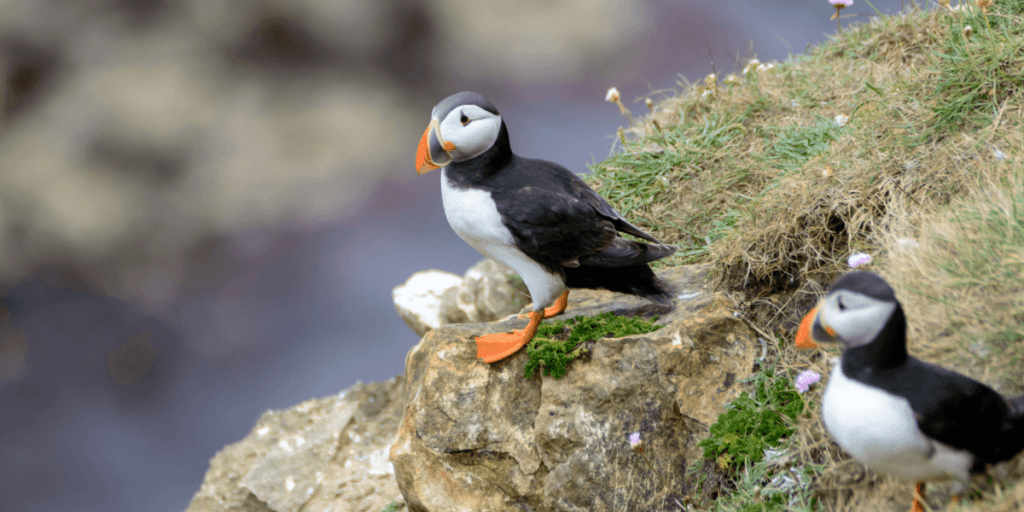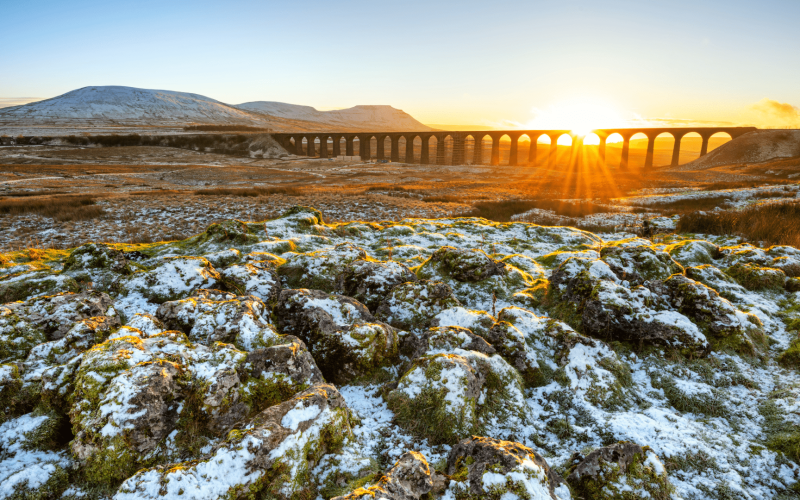
Yorkshire, boasts a diverse range of natural habitats, including rugged coastlines, moorlands, forests, wetlands, and meadows, providing a home for a numerous array of fascinating wildlife.
On the spectacular Yorkshire coast, Bempton Cliffs, is home to one of the UK's top wildlife spectacles. Around half a million seabirds gather here between March and August to raise a family on the towering chalk cliffs that overlook the North Sea. The huge white chalk cliffs are impressive at any time of year. But visit between April and July, and you'll find them transformed into England’s largest seabird city. Here Puffins, Gannets, Kittiwakes and Guillemots live life on the edge. There are more Gannets acrobatically diving into the deep here than anywhere else on mainland England. Nearby at Flamborough Head, grey, and common seals are a wonderful sight lying on the beaches below, especially during pupping season. Along the coast you can also spot them at Ravenscar and Spurn near Hull.

Further inland, the rolling moorlands and uplands are ideal for bird species like Golden Plover, Red Grouse and Curlews. In spring and summer Corn Buntings, Skylarks and Linnets breed in the grassland and scrub where land meets the sea, while Kestrel and Barn Owls hunt under wide open skies, often joined in winter by Short-eared Owls.
The North Yorkshire Moors is an ideal habitat for several reptiles, including Common Lizards and Adders. If you are lucky, you may spot Brown Hares, these magnificent creatures are a wonderful sight to see and one or the rarest sites is to see a ring of hares dancing in early spring, once witnessed out horse riding on Sutton Bank. Another elusive creature to spot in the forests that hug the Cleveland Hills, is the Roe Deer. Very shy they are active both day and night feeding off the vegetation and wild berries in summer and exist on nuts, bark and fungi in the winter months. Red squirrels are being introduced back into the region with a colony being bred at Yorkshire Arboretum and can also be found living wild at Snaizeholme, near Hawes in the Yorkshire Dales.
Numerous pheasants and grouse can be found roaming everywhere. Much of the countryside is owned by large estates who breed them for the shooting season so they are not strictly wild in the pure sense. Grouse and pheasant shooting is a lucrative business, attracting clients not only from the UK, but Europe and worldwide. They play an important part in contributing to the management of the land and employment.
The Glorious Twelfth is the twelfth day of August, the start of the shooting season for red grouse.
Boat trips
Sail past Bempton’s 400-foot chalk cliffs as clouds o seabirds swoop, soar and circle above and around the boat. For nature lovers of all ages, this is the stuff that memories are mad of. RSPB cruises, please contact their cruise office on 01262 422211 or email bempton.cruises@rspb.org.uk
In late summer off the coast at Whitby migrating shoals of herrings arrive to spawn, attracting birds, seals, sharks and whales to feed. It is an ideal time to take a boat trip from the harbour to spot Minke whales, Sei, Fin and Humpback whales. Whitby Whale Watching www.whitbycoastalcruises.com
This also attracts cetaceans, sharks, birds and seals to feed. Over the years there have been numerous sightings of Minke whales, Sei, Fin and Humpback whales.



